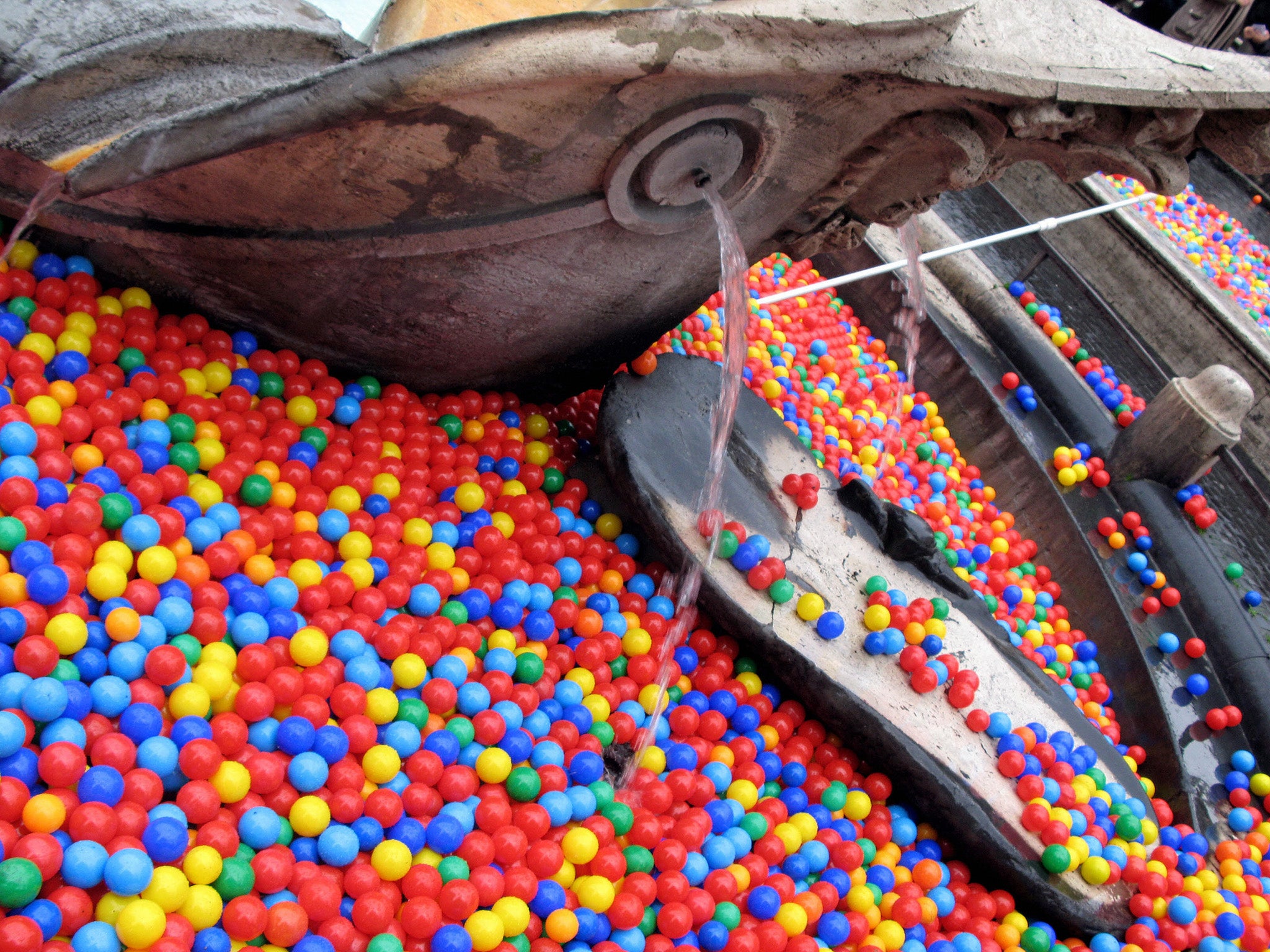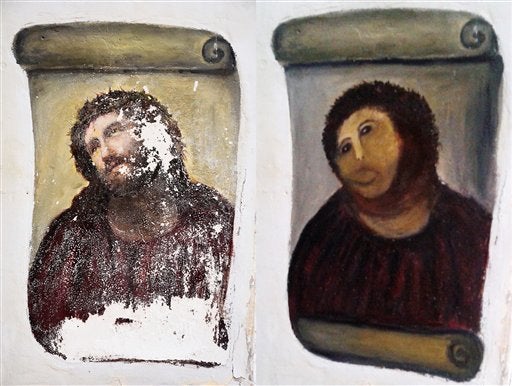Four positive acts of art vandalism
Occasions when it is better that art is not sacred

Your support helps us to tell the story
This election is still a dead heat, according to most polls. In a fight with such wafer-thin margins, we need reporters on the ground talking to the people Trump and Harris are courting. Your support allows us to keep sending journalists to the story.
The Independent is trusted by 27 million Americans from across the entire political spectrum every month. Unlike many other quality news outlets, we choose not to lock you out of our reporting and analysis with paywalls. But quality journalism must still be paid for.
Help us keep bring these critical stories to light. Your support makes all the difference.
Yesterday a painting by Eugene Delacroix was vandalised in a gallery in northern France.
Understandably there has been outcry about this, it being the latest in a long line of high profile defacements of public art, notably the Rothko at Tate Modern last year.
But it can sometimes be difficult to differentiate between a militant act, street art, vandalism and madness.
What some might call vandalism, others will call art. What some see as willful destructions others will view as the creation of something new.
Here are some examples:
Having a Ball
More than a million multi-coloured plastic balls were released from the top of the Spanish Steps as part of a 'live art' stunt in 2008.
Artist Graziano Cecchini unleashed the balls just weeks after he pulled a similar stunt at another of Rome's top tourist attractions the Trevi Fountain, pictured above.
That time he poured in several containers of red paint into the waters quickly turning the fountain into a surreal pool resembling blood.
Bridge over troubled water
In June 2010 several members of the Voina group painted a penis on the Liteiny Bridge in St Petersburg.
Evading and fighting off security, the 65-meter high image was completed just before the bridge opened, as it does each evening to let ships pass through.
The penis ‘erected,’ directly facing the headquarters of the FSB, the KGB’s successor. The group called the artwork Dick Captured by KGB.
Interesting road markings
Guerilla artists of IEPE dumped blue, yellow, purple and red along each major motorway crossing at a central space during a pause in traffic.
When they sped away, bicyclists and moped riders began to trail thin lines of color, crossed in turn by larger trailings from four-wheeled vehicles around them. Mixed paints overlapped and bled to form new colours along the way.
A beautifully simple act of interactive and chaotic art on the street.
Monkeying around
The 80-year-old Spanish artist who became famous because of her botched restoration of a Christ fresco in a small-town church made us laugh a lot.
Gimenez became a sensation in August when pictures spread on the internet of an Ecce Homo ("Behold the Man", pictured below) mural in a chapel in the town of Borja that she disfigured while trying to restore it. Twitter users dubbed it Ecce Mono ("Behold the Monkey").

Join our commenting forum
Join thought-provoking conversations, follow other Independent readers and see their replies
Comments